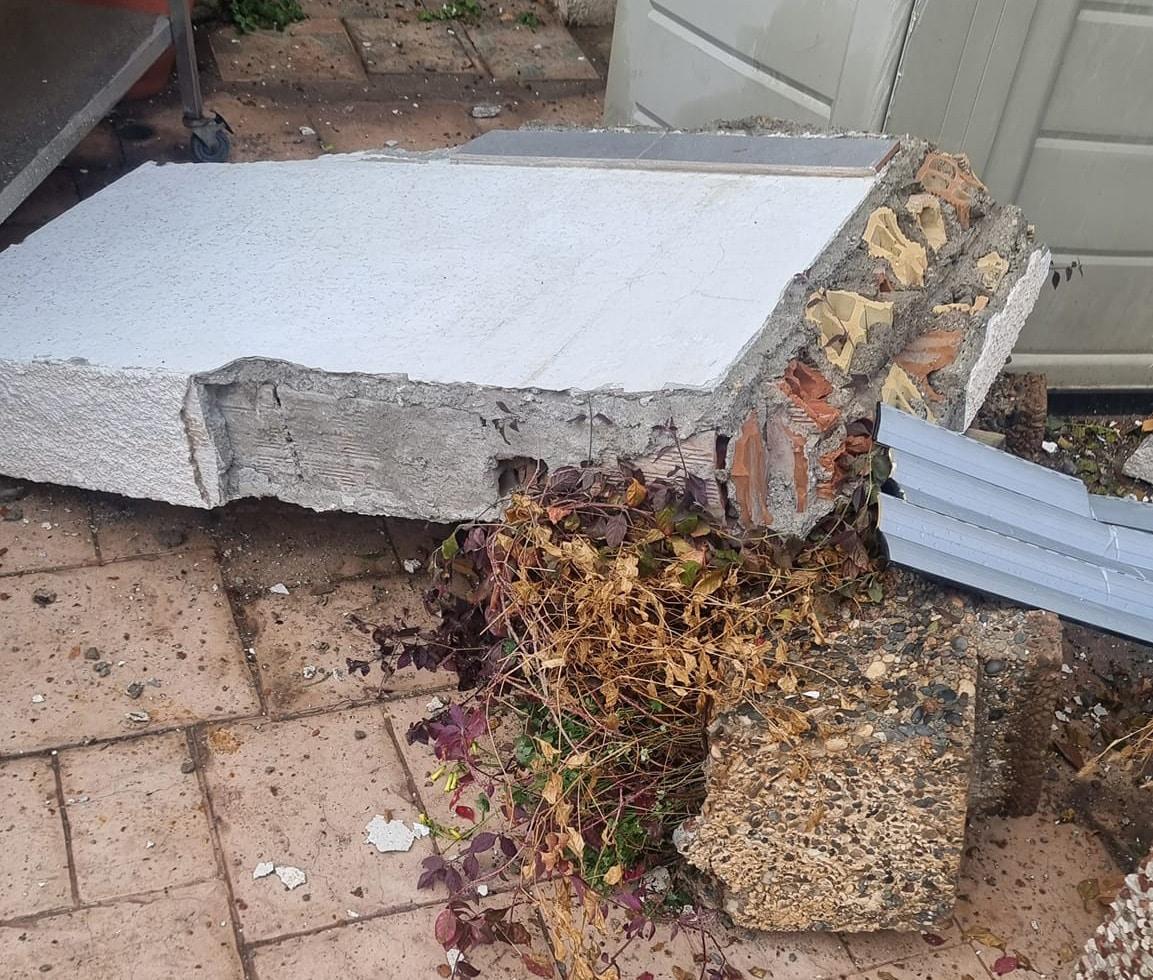On Friday, January 26, an emergency occurred in the Germasogeia area of Limassol.
A balcony collapsed in a multi-story building on Georgiou Street.
Fortunately, no one was injured. Although there could have been casualties, the building borders a pedestrian path, which is used by hundreds of people every day. This incident has caused a new wave of outrage from the Cyprus Chamber of Science and Technology (ETEK). In particular, its head Konstantinos Konstantis once again called on the government of the island state to introduce mandatory safety certificates for houses and multi-story buildings - similar to the technical inspection (MOT), which periodically applies to cars.
The collapse of the balcony once again emphasizes the urgent need for emergency measures to ensure the protection of the public, and most importantly, the implementation at the legislative level of provisions for regular inspection of buildings," Konstantis said.
He added that ETEK has repeatedly put forward "important and well-documented proposals on this question, and the state should finally take them seriously, committing itself to their implementation".

Напомним, что многие здания на Кипре пережили не только своих создателей, но и стали свидетелями целых эпох.
Тем не менее, естественный процесс старения неизбежно меняет их облик. Время и суровый южный климат не щадят объекты недвижимости, особенно те, что расположены в исторических центрах крупных городов острова и на побережье. Ситуацию усугубляет тот факт, что большинство собственников недвижимости не торопится вкладывать деньги в их реставрацию. В результате сотни зданий на Кипре находятся в аварийном состоянии.
Надо сказать, что в деревнях Кипра ситуация обстоит гораздо хуже, чем в городских центрах. Так, на сегодняшний день, в реестре опасных зданий Управления по развитию горных сообществ числится 826 аварийных объектов и 47 аварийных законсервированных зданий. Всего в список включены 112 горных населенных пунктов, из которых 12 зарегистрированы как памятники архитектуры или находятся под угрозой исчезновения.
Константис предложил разделить весь жилой фонд Кипра на две основные группы.
В первую включить общественные здания с большим числом посетителей (больницы, кинотеатры, торговые центры, супермаркеты), а во вторую — частные многоэтажные дома с большим числом жильцов. Согласно его задумке, техосмотр строений первой группы необходимо проводить каждые 5-7 лет, а второй — минимум один раз в 10 лет.
По его мнению, следует проинспектировать все здания, возведенные на острове до 1994 года, поскольку их строили без учета требований сейсмической устойчивости. Затем необходимо проверить дома, строительство которых было завершено до 2012 года, так как их возводили без соблюдения требований Eurocodes (стандартов ЕС для расчета несущих конструкций строительных сооружений и защиты конструкций от воздействия огня). В последнюю очередь Константис предлагает инспектировать жилые и коммерческие здания, построенные после 2021 года, так как они возводились с учетом требований ЕС, а значит менее подвержены опасности.
Константис подчеркнул, что правительство должно принять необходимые меры до того, как произойдет ЧП. Он также упомянул, что на сознательность собственников недвижимости не стоит сильно рассчитывать, поскольку пока существуют значительные пробелы в законодательстве относительно реконструкции старых зданий, они вряд ли захотят проявлять инициативу.
Константис заявил, что на Кипре необходимо создать культуру ухода за зданиями и их своевременного ремонта. Это позволить не только продлить срок эксплуатации домов, но и избежать ЧП.
Many buildings in Cyprus have outlived not only their creators but have witnessed entire eras.
Nevertheless, the natural aging process inevitably changes their appearance. Time and the harsh southern climate do not spare real estate, especially those located in the historical centers of the major cities of the island and on the coast. The situation is aggravated by the fact that most property owners are not in a hurry to invest in their restoration. As a result, hundreds of buildings in Cyprus are in a state of disrepair.
It must be said that in the villages of Cyprus the situation is much worse than in urban centers. Thus, as of today, the Mountain Communities Development Authority's register of dangerous buildings lists 826 emergency facilities and 47 emergency mothballed buildings. A total of 112 mountain communities are listed, of which 12 are registered as landmarks or endangered.
Konstantis proposed to divide the entire housing stock of Cyprus into two main groups.
The first include public buildings with a large number of visitors (hospitals, cinemas, shopping centers, supermarkets), and in the second - private high-rise buildings with a large number of residents. According to his idea, the first group of buildings should be inspected every 5-7 years, and the second group - at least once every 10 years.
In his opinion, it is necessary to inspect all the buildings erected on the island before 1994, because they were built without taking into account the requirements of seismic stability. Then the houses completed before 2012 should be inspected, as they were not built in compliance with Eurocodes (EU standards for the calculation of load-bearing structures of building structures and protection of structures against fire). Last, of all, Konstantis suggests inspecting residential and commercial buildings built after 2021, as they were built in compliance with EU requirements and are therefore less exposed to danger.
Konstantis emphasized that the government should take the necessary measures before an emergency occurs. He also mentioned that real estate owners should not count on their conscience, because as long as there are significant gaps in the legislation regarding the reconstruction of old buildings, they are unlikely to want to take the initiative.
Konstantis stated that Cyprus needs to create a culture of maintenance and timely repair of buildings. This would not only extend the life of the buildings but also avoid accidents.
